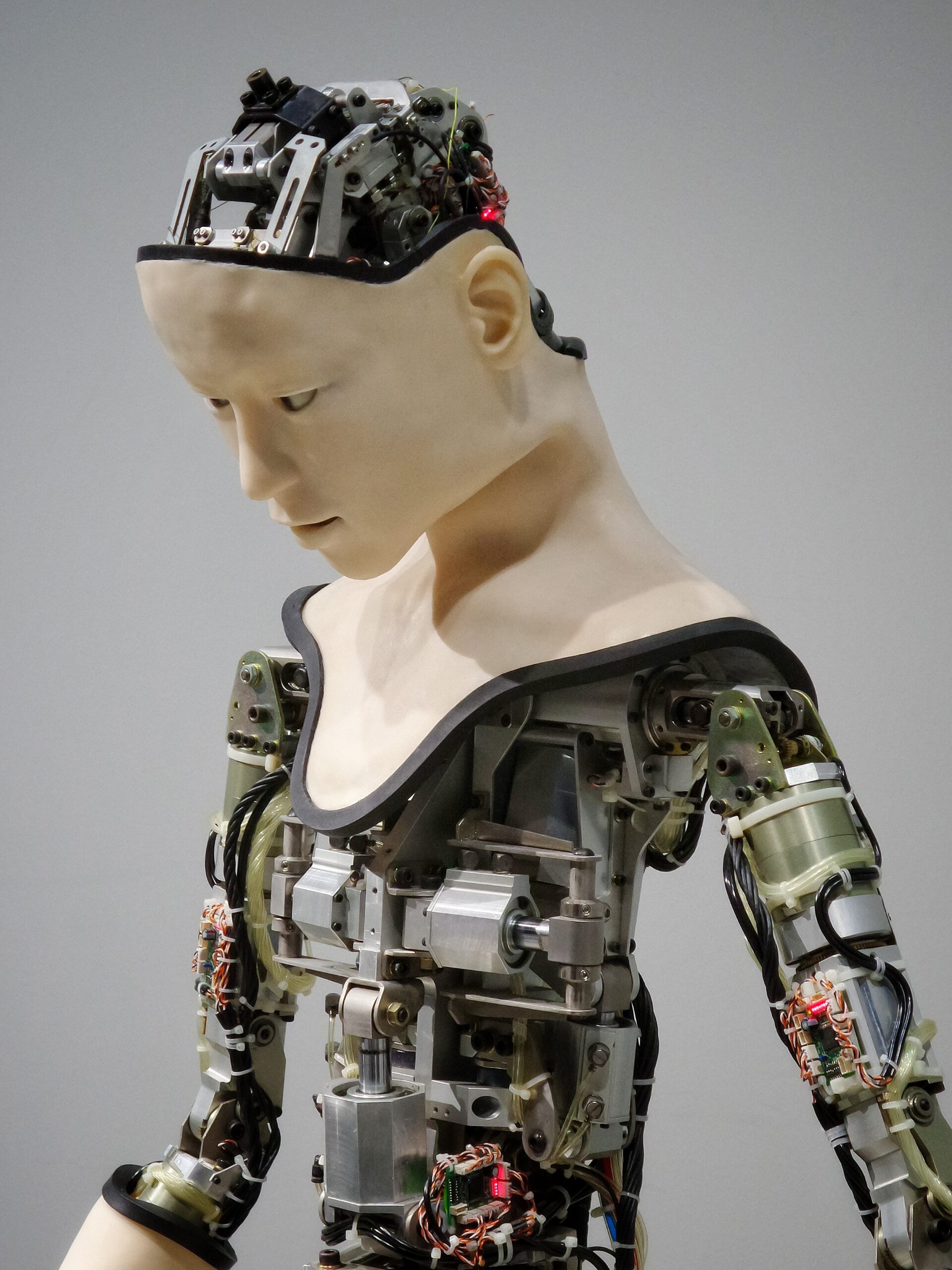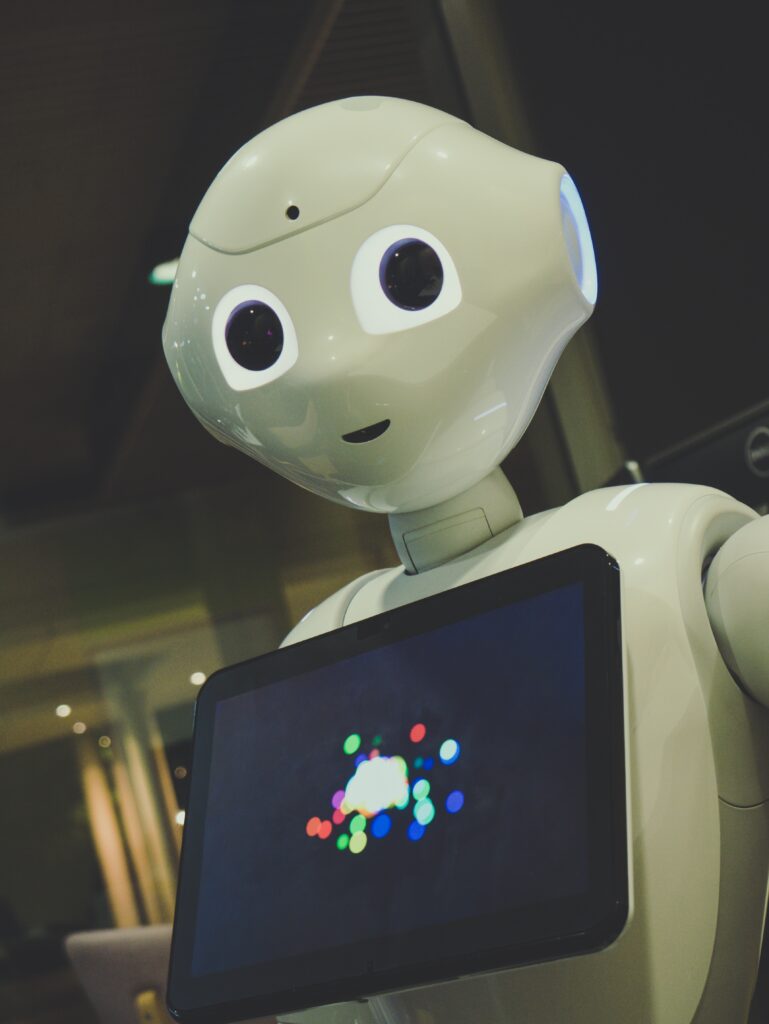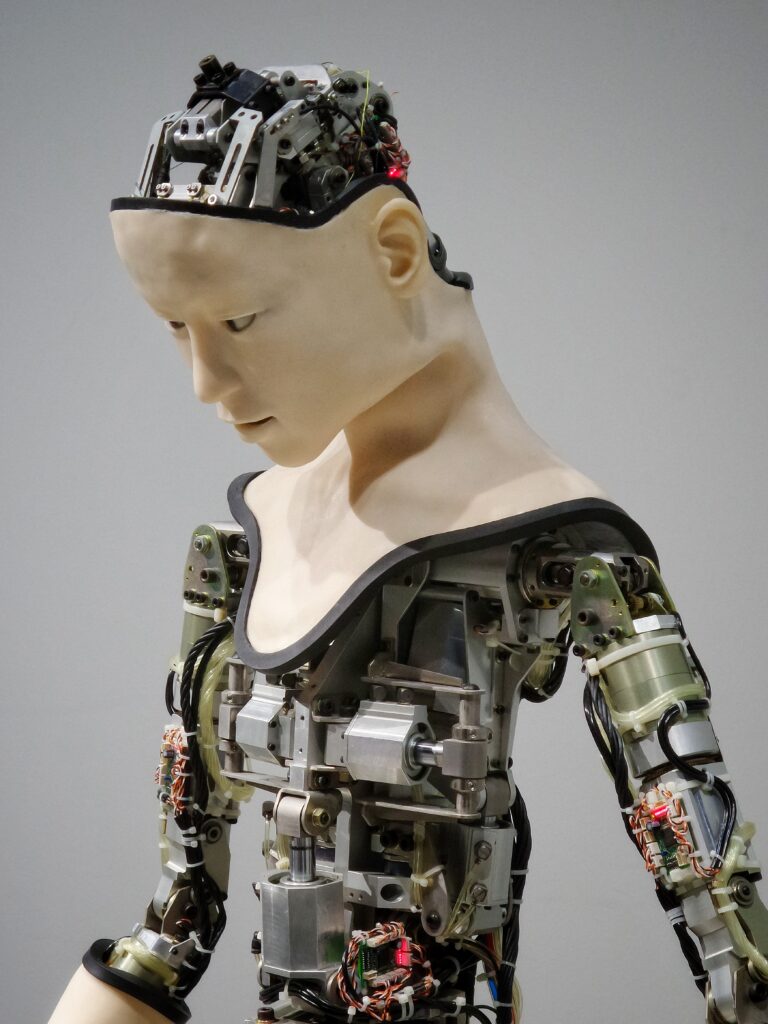
Artificial Intelligence, often referred to as AI, has come a long way in its evolutionary journey. This article provides a concise historical overview of the development and progression of AI over the years. From its humble beginnings in the 1950s to its current advancements in machine learning and deep neural networks, AI has constantly evolved and revolutionized various industries. Explore the key milestones and breakthroughs that have shaped the landscape of AI, and gain a deeper understanding of its potential and impact on our modern society.
Pre-20th Century
The origins of artificial intelligence
Artificial Intelligence (AI) has a long and fascinating history that can be traced back to the pre-20th century. The concept of creating machines with human-like intelligence can be found in ancient mythology, where tales of intelligent robots and automata were told. For example, the ancient Greek myth of Pygmalion and Galatea portrayed a sculptor who created a statue that came to life. These early stories demonstrate a fascination with the idea of creating artificial beings that possess human-like intelligence and capabilities.
Early development of machines with human-like intelligence
In the late 18th and early 19th centuries, inventors and scientists began to explore the possibility of creating mechanical machines that could mimic human behavior. One notable example is the Mechanical Turk, a chess-playing automaton created by Wolfgang von Kempelen in 1770. The Mechanical Turk amazed audiences with its ability to play chess against human opponents, but it was later revealed to be operated by a hidden human chess master.
Another significant development in the early history of AI was Charles Babbage’s work on the Analytical Engine in the 1820s. Although Babbage’s machine was never fully realized, his ideas laid the foundation for modern computing and the concept of a universal machine.
1940s-1950s
The birth of the field of artificial intelligence
The field of AI as we know it today began to take shape in the 1940s and 1950s. During this period, scientists and mathematicians started to explore the possibility of creating machines that could exhibit intelligent behavior. One key figure in this development was Alan Turing, a British mathematician, and computer scientist.
The idea of a universal machine
Turing’s groundbreaking 1936 paper, “On Computable Numbers, with an Application to the Entscheidungsproblem,” introduced the concept of a universal machine, which can compute anything that is computable. This concept laid the theoretical foundation for modern computers and the idea that machines could perform any task that could be described by a set of instructions.
Alan Turing and the concept of intelligent machines
Turing’s work on the idea of a universal machine also had implications for the development of intelligent machines. In his 1950 paper, “Computing Machinery and Intelligence,” Turing proposed the famous “Turing Test” as a way to determine whether a machine could exhibit intelligent behavior. According to the test, if a machine could respond to questions in a way that was indistinguishable from a human, then it could be considered intelligent.

1950s-1960s
The Dartmouth Conference and the birth of AI as a field
In the summer of 1956, a group of researchers organized the Dartmouth Conference, which is considered the birth of AI as a field. The conference aimed to bring together scientists and experts from various disciplines to explore the potential of creating machines with human-like intelligence. This event marked the beginning of dedicated AI research and the formation of AI as a formal field of study.
Early AI research and limitations
During the 1950s and 1960s, significant progress was made in early AI research. Researchers focused on areas such as problem-solving, learning, and language processing. However, they soon encountered significant challenges and limitations that hindered the development of AI. These included the lack of computational power, limited data availability, and the complexity of human cognitive processes.
John McCarthy and the development of Lisp programming language
John McCarthy, an American computer scientist, played a crucial role in the development of AI during this period. In 1958, McCarthy invented the Lisp programming language, which became one of the primary languages used in AI research. Lisp’s flexibility and ability to manipulate symbolic expressions made it a valuable tool for AI programming.
1960s-1970s
The development of expert systems
In the 1960s and 1970s, the development of expert systems became a prominent focus in AI research. Expert systems are computer programs designed to emulate the knowledge and decision-making abilities of human experts in specific domains. These systems were built using symbolic reasoning and rule-based approaches, and they aimed to solve complex problems by applying human-like expertise.
ELIZA and early natural language processing
Another significant development in AI during this period was ELIZA, a computer program created by Joseph Weizenbaum in 1966. ELIZA was designed to simulate conversation by using pattern matching and simple natural language processing techniques. While ELIZA’s capabilities were limited, it sparked interest in the field of natural language processing and laid the foundation for future advancements.
The limitations and skepticism towards AI during this period
Despite the progress made in AI research during the 1960s and 1970s, there were growing concerns and skepticism about the field. Researchers faced challenges in dealing with the complexity of human intelligence, and there were doubts about whether machines could ever truly exhibit true intelligence. These limitations and skepticism contributed to what later became known as the “AI winter,” a period of reduced funding and interest in AI research.

1980s-1990s
The rise of expert systems and rule-based AI
In the 1980s, expert systems and rule-based AI gained widespread popularity as practical applications of AI technology. Companies and organizations began to develop and deploy expert systems to automate tasks in areas such as medicine, finance, and engineering. Expert systems showed promise in solving specific problems and demonstrated the potential of AI to provide valuable insights and decision-making support.
The introduction of neural networks
In the 1980s, neural networks made a comeback in AI research. Neural networks, inspired by the structure and function of the human brain, are computational models composed of interconnected nodes, or “neurons.” These networks excel at pattern recognition and learning from training data. The rediscovery of neural networks led to significant advancements in machine learning and laid the groundwork for future breakthroughs in AI.
The emergence of machine learning
The 1990s witnessed the emergence of machine learning as a subfield of AI. Machine learning focuses on the development of algorithms and techniques that allow computers to learn from and make predictions or decisions based on data. Researchers began to explore various machine learning approaches, such as decision trees, support vector machines, and Bayesian networks, and their applications in diverse domains.
1990s-2000s
The development of intelligent agents
In the 1990s and 2000s, the concept of intelligent agents gained attention in AI research. Intelligent agents are autonomous entities that can perceive their environment and take actions to achieve specific goals. These agents can process and analyze data, learn from their experiences, and adapt their behavior accordingly. The development of intelligent agents opened up new possibilities for AI applications in areas such as robotics, virtual assistants, and customer service.
The birth of data mining and knowledge discovery
The explosion of digital data in the late 20th century led to the birth of data mining and knowledge discovery as crucial areas of AI research. Data mining involves extracting useful patterns and knowledge from large datasets, while knowledge discovery focuses on uncovering hidden insights and trends. These fields played a vital role in enabling AI systems to make sense of vast amounts of information and provided valuable tools for decision-making and prediction.
The emergence of AI in popular culture
The 1990s and 2000s saw a rise in the portrayal of AI in popular culture, which contributed to the public’s awareness and curiosity about the field. Movies like The Matrix and Blade Runner depicted dystopian futures where AI played central roles, sparking debates about the ethical and societal implications of AI. At the same time, AI applications like IBM’s Deep Blue defeating world chess champion Garry Kasparov in 1997 captured public attention and showcased the potential of AI technology.

2000s-2010s
The growth of machine learning and deep learning
The 2000s and 2010s witnessed a significant growth in the field of machine learning, driven by advances in computing power, availability of large datasets, and improved algorithms. Machine learning techniques, such as support vector machines, random forests, and neural networks, became increasingly powerful and accurate in solving complex problems. Deep learning, a subfield of machine learning that focuses on multi-layer artificial neural networks, revolutionized the field by achieving remarkable results in areas such as image and speech recognition.
The rise of big data and AI applications
The exponential increase in data generation and storage capabilities in the 21st century paved the way for the rise of big data and AI applications. Big data refers to extremely large and complex datasets that are difficult to process using traditional methods. AI techniques, such as machine learning and data mining, became crucial tools in extracting valuable insights and making predictions from big data. AI applications proliferated in diverse areas, including healthcare, finance, marketing, and social media, transforming industries and improving decision-making processes.
Ethical and societal challenges in AI
As AI technology advanced, ethical and societal challenges also became prominent concerns. Questions about privacy, biased algorithms, job displacement, and the potential misuse of AI raised important ethical considerations. AI researchers and policymakers began to address these challenges by emphasizing transparency, fairness, and accountability in AI systems. The need for responsible AI practices and regulations became increasingly evident as AI technology played a more significant role in society.
2010s-Present
Advances in natural language processing and conversational AI
The 2010s brought significant advances in natural language processing (NLP) and conversational AI. NLP involves teaching computers to understand and generate human language, enabling applications such as voice assistants, chatbots, and language translation. Breakthroughs in deep learning and the availability of large, labeled language datasets led to the development of powerful NLP models, such as Google’s BERT and OpenAI’s GPT-3, which demonstrated remarkable language understanding and generation capabilities.
AI in autonomous vehicles and robotics
The 2010s also marked significant progress in the application of AI in autonomous vehicles and robotics. Self-driving cars, drones, and robotic systems equipped with AI technology demonstrated the potential to revolutionize transportation, agriculture, healthcare, and other industries. AI algorithms enabled these machines to perceive and navigate the environment, make decisions, and perform complex tasks autonomously. The development of AI-powered robots and autonomous systems opened up new possibilities for enhancing productivity, safety, and efficiency.
Recent breakthroughs in AI research
In recent years, AI research has witnessed several breakthroughs across various domains. In computer vision, deep learning models achieved unprecedented accuracy in tasks like image classification, object detection, and facial recognition. AI systems demonstrated superhuman performance in complex games like Go, poker, and Dota 2, surpassing human experts. Research in AI ethics and fairness gained traction, aiming to address algorithmic biases and promote inclusive and transparent AI systems. The field also witnessed advancements in reinforcement learning, robotics, and explainable AI, pushing the boundaries of what AI can achieve.
Future Possibilities
The potential of AI in healthcare and medical research
AI holds significant potential in transforming healthcare and medical research. Applications like medical imaging analysis, disease diagnosis, drug discovery, and personalized medicine stand to benefit from AI technology. AI-powered systems can analyze medical images with higher accuracy, assist in early disease detection, and provide valuable insights for treatment decisions. Additionally, AI’s ability to process and analyze large healthcare datasets can lead to improved patient outcomes and more efficient healthcare delivery.
AI’s impact on transportation and logistics
The future of transportation and logistics will be heavily influenced by AI. Autonomous vehicles, AI-driven traffic management systems, and smart logistics networks can enhance safety, reduce congestion, and optimize resource allocation. AI-powered algorithms can make real-time decisions based on traffic conditions, weather, and user preferences, ensuring efficient transportation services. Furthermore, AI’s predictive capabilities can optimize supply chains, minimize delivery times, and reduce operational costs for businesses in the logistics industry.
Ethical considerations for the future of AI
As AI continues to advance and become more integrated into various aspects of society, ethical considerations become increasingly important. Ensuring fairness, transparency, and accountability in AI algorithms and decision-making processes is crucial to prevent biases, discrimination, and misuse of AI technology. Society must carefully navigate the challenges posed by AI, such as job displacement, privacy concerns, and the impact on marginalized communities. Responsible development and deployment of AI systems require collaboration between researchers, policymakers, and stakeholders to ensure the technology is aligned with human values and societal well-being.
Conclusion
The evolution of artificial intelligence spans centuries and has witnessed remarkable advancements in numerous areas, from early automata to modern machine learning and deep learning models. The field has encountered challenges and limitations, but it has persevered, continuously pushing boundaries and transforming industries. AI’s potential is immense, with applications ranging from healthcare to transportation, and its impact on society will only grow. As we move forward, it is crucial to anticipate and address the ethical and societal implications of AI, ensuring that it aligns with human values and promotes the overall well-being of humanity. With responsible development and thoughtful regulation, AI can unlock new possibilities, revolutionize industries, and improve our lives in meaningful ways.



